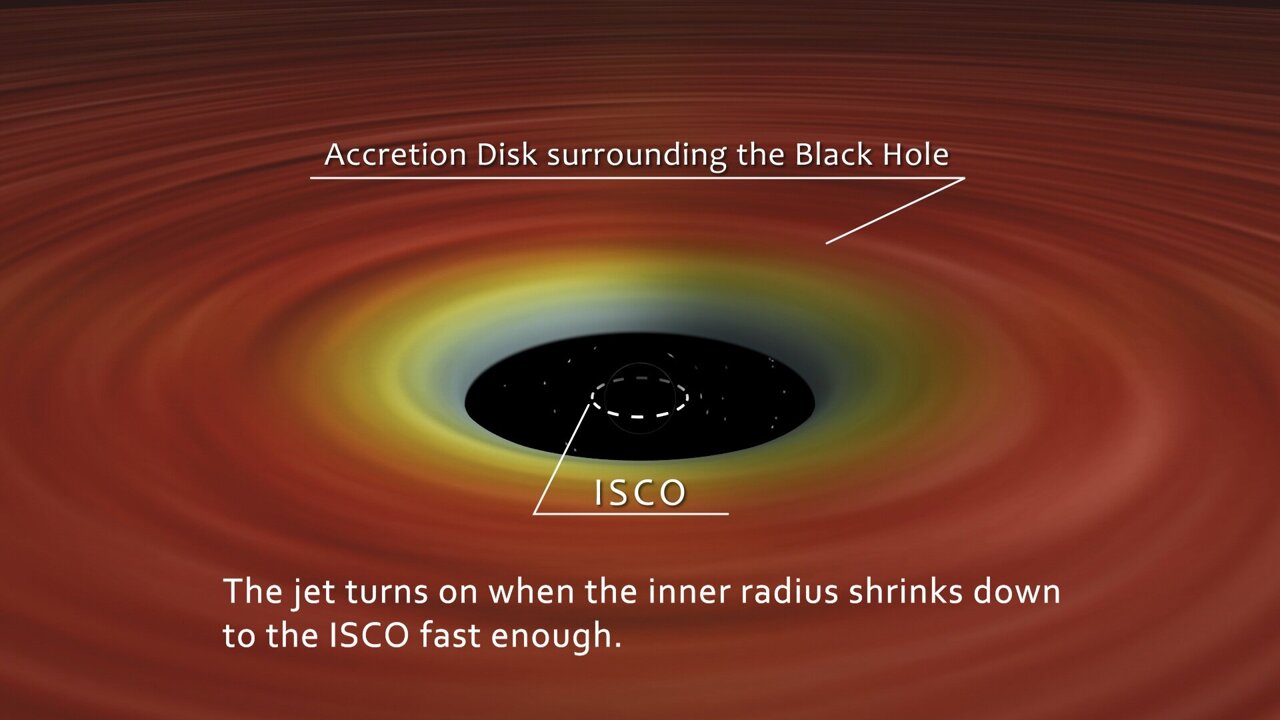
Black holes play an essential role in galaxy formation and are crucial for comprehending gravity, space, and time. A stellar-mass black hole is formed when a large star collapses under its own gravity towards the end of its lifecycle. Generally, these black holes possess masses between approximately 3 to 20 solar masses.
Occasionally, black holes produce streams of ionized gas (plasma) that blast outwards almost at the speed of light. Despite being observed over a hundred years ago, the mechanisms behind the formation of these jets and their underlying causes have stayed enigmatic, often referred to as one of the "puzzles of physics."
Professor Kazutaka Yamaoka from Nagoya University in Japan, together with researchers from the University of Toyama and various international institutions, has identified crucial factors enabling stellar black holes to produce plasma jets. These discoveries were documented in their recent publication. Publications of the Japanese Astronomy Society When superheated gas matter quickly contracts towards the black hole, jets are formed.

Rotating disks of interstellar material
Grasping how jets are expelled from black holes is essential since it illuminates the process of galaxy development, the spread of energy throughout the cosmos, and the characteristics of black holes. These jets affect stellar birth, disseminate power over immense expanses, and act as markers helping us find far-off black holes. Furthermore, they offer understanding into the basic principles governing black hole behavior.
Dust and gas particles get drawn towards black holes due to their powerful gravitational pull. These materials spin around the black hole within a slim disc known as an accretion disc, which is essential for forming jets.
The researchers examined a black hole system featuring a stellar-mass black hole paired with a sun-like star circling one another. This setup allows for approximately 5 to 6 jet events within roughly 20 days, providing an excellent opportunity to investigate these occurrences. Through their analysis of X-ray and radio observational data collected between 1999 and 2000, they managed to monitor the rate at which X-ray emissions close to the black hole evolved over time and calculate the overall energy output generated by the jets.
Causes of jet formation
The findings indicated that the jets happen when the inner radius of the accretion disk abruptly shrinks and approaches the innermost stable circular orbit (ISCO), which is the nearest point where material can orbit without descending into the center.
Initially, the scientists noted that the inner radius of the gas disk was positioned at a greater distance from the black hole. As this inner radius contracts quickly and approaches the ISCO, the jet becomes active. This eruption persists for some time; nevertheless, once the inward motion of the disk’s inner boundary halts, so does the jet activity.
From this analysis, they pinpointed two essential criteria required for a stellar black hole to produce jets: the inner part of the gaseous disk encircling the black hole needs to swiftly approach the black hole and this motion has to extend as far as the ISCO.
Researchers had previously observed that during a black hole jet eruption, X-rays become “softer” (with an increase in lower-energy X-rays relative to higher-energy ones) and exhibit reduced quick variations over brief periods. The new research reveals that these alterations in X-ray emissions occur due to the inward rush of the gas disk’s central region towards the black hole—a phenomenon directly linked to the initiation of the jet. As this core section contracts, it generates greater amounts of softer X-rays with diminished fluctuation as opposed to the highly erratic harder X-rays. Thus, this process clarifies why shifts in X-ray signatures precede the emergence of jets.
The research shows that jets develop under evolving, dynamic circumstances instead of consistent, stationary conditions, which numerous theoretical frameworks have presupposed. This allows researchers to more accurately forecast the appearance of plasma jets and examine their underlying processes in real time.
"Our findings regarding jet formation in stellar-mass black holes could offer a comprehensive solution for grasping these occurrences. Although these binary systems—in which a black hole circles a regular star—are quite different from the supermassive black holes found at galactic centers, we think comparable physical processes function across various sizes of black holes," Professor Yamaoka stated.
"Although challenging because of their slow time evolution and the difficulties in measuring their internal structures, our next step will be to apply our findings to supermassive black holes," he said.
More information: Kazutaka Yamaoka and colleagues examined the X-ray spectral and timing characteristics of the black hole binary system XTE J1859+226, as well as how these relate to jet emissions. Publications of the Astronomical Society of Japan (2025). DOI: 10.1093/pasj/psae113
Provided by Nagoya University
This tale was initially released on Massima . Subscribe to our newsletter For the most recent updates on science and technology.